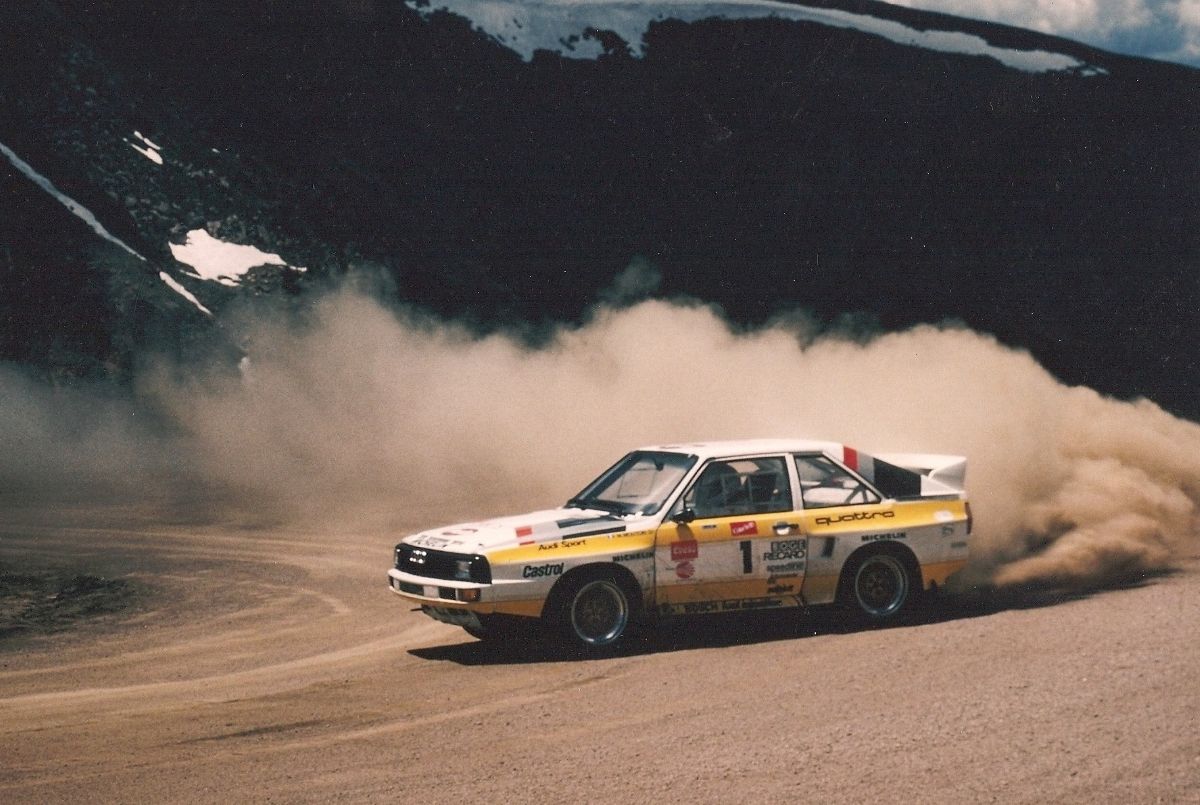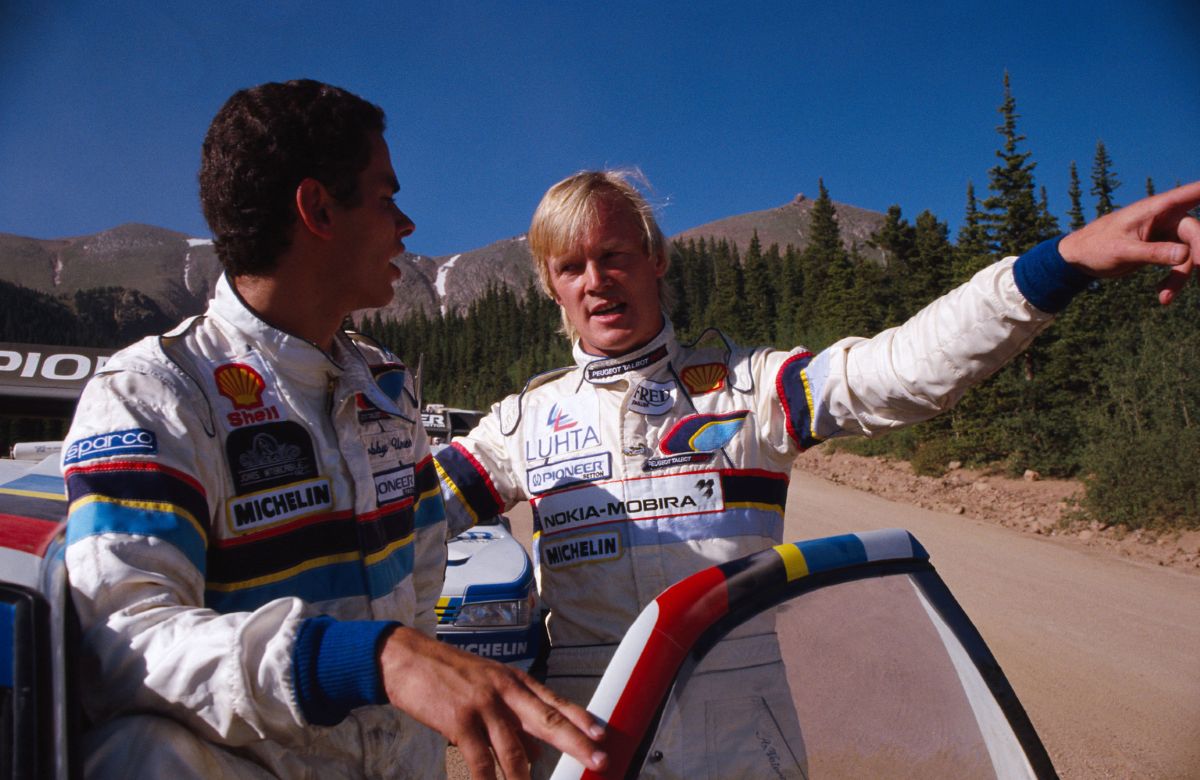John Buffum’s 12m20.52s ascent of the 1982 Pikes Peak International Hill Climb in his Group 4-spec Audi Quattro was more than 35 seconds slower than Bill Brister’s winning time in a purpose-built, Chevy-powered Wells Coyote. But the American rally ace had shown the potential of turbocharged, all-wheel-drive rally machinery on the dirt and gravel of the “Race to the Cloud’s” 12.42 miles, 150-plus turns and 4,720ft of elevation change, and for the rest of the decade, Europe’s rallying powerhouses would come, see and conquer on the sweeps, hairpins and vertiginous drops of “America’s Mountain.”
The European assault began with the spectacular Group B machinery that dominated the World Rally Championship until its outlawing at the end of 1986, then continued with ever more outlandish machinery that piled on the power, aero and tech in the thin Colorado air.
Five wins in five years between 1985 and ’89 – three for Audi, then two for Peugeot – were achieved by some of world rallying’s biggest stars, along with two generations of Pikes Peak royalty, the Unsers. But before all of that, Buffum went back for a second shot in 1983, this time winning the Rally class in a Gp. B-spec Quattro.
Recognizing the marketing gold of sending a production-based AWD car up the 14,110ft peak, Audi pulled out the stops for 1984, sending the WRC’s most-successful woman driver, Michele Mouton, and her co-driver Fabrizia Pons, in a full-factory Quattro A2.
As Mouton told the RACER Debrief podcast, she treated the hill climb just as they would a WRC special stage, with Pons calling pace notes for the French driver. Despite a minor engine issue on race day that sapped the A2’s power at key stages on the run, the duo won the Open Rally class and finished second overall behind that guy Bill Brister in his Wells Coyote.
A year later, Audi was back, but several levels up on the intensity scale. For starters, Audi Sport tech guru Roland Gumpert decided Mouton would go solo, removing the diminutive Pons from the co-driver’s seat in a quest to shed any kilos he could. For seconds, the team brought the Audi Sport quattro S1, with its shorter wheelbase, large rear wing and composite body panels. And free of the restrictions of the Gp. B rules, Gumpert pulled additional weight out of the car and tuned its turbocharger characteristics to help deal with the power-sapping altitude.
Despite being copped for speeding in the pre-start area during practice – “It was the first time I saw this macho side of the people,” she recalls. “The feeling was like, ‘Why is this woman coming to the middle of our country with a car like this Audi?’ They could not accept it” – and being forced to start her run from a standing, rather than flying start, Mouton shattered the hill record on race day.

Michѐle Mouton took her Audi Sport quattro S1 to a record-breaking win in 1985, becoming the first woman to conquer Pikes Peak.
The S1 completed the run in 11m25.390s, beating Al Unser Jr.’s 1983 record run by almost 13 seconds as a hugely motivated Mouton kept the throttle planted through a sequence of fast sweepers near the top of the mountain for the first time.
“I decided not to lift. I could feel the car pulling towards the drop,” she says. “I thought I was going off and I accelerated even more. I wanted to show them that anything they could do they would never stop me.”
It was the first overall win for a woman – a feat still to be equaled some 40 years later – and the first for a non-American driver.
But having accomplished it, Mouton was done with Pikes Peak – and Audi, too. She moved to Peugeot in 1986, winning the German Rally Championship in a Gp. B 205 T16, but is adamant that she wouldn’t have returned to the mountain even if she’d stayed with Audi, such was the attitude and hassle she’d encountered.


